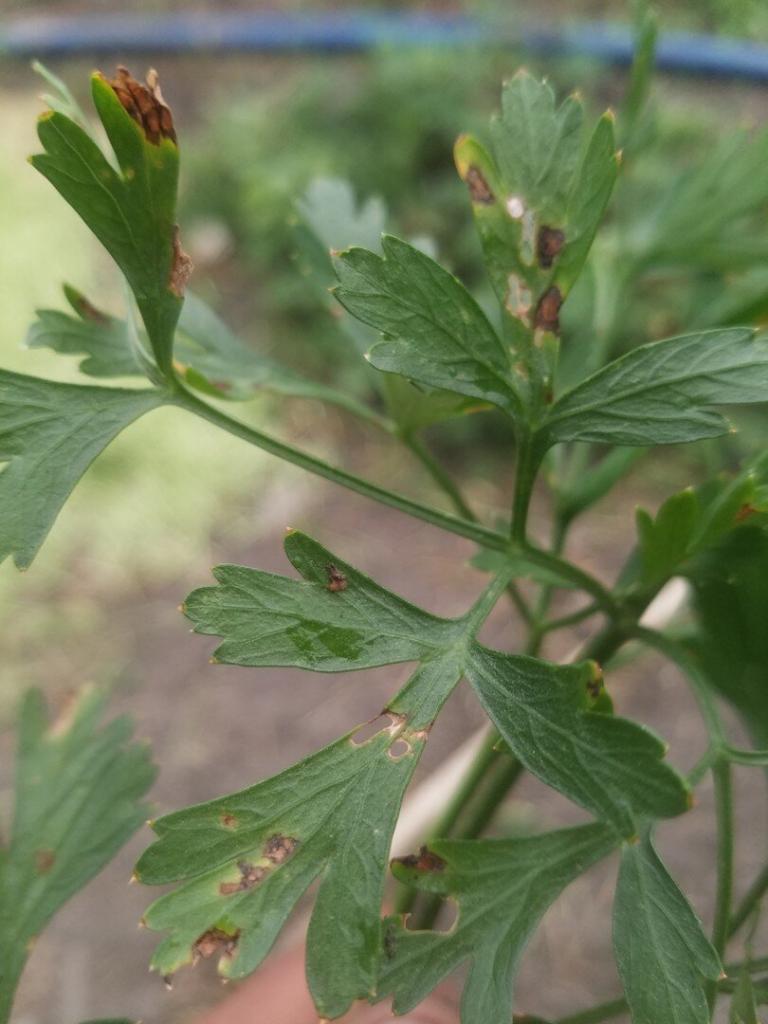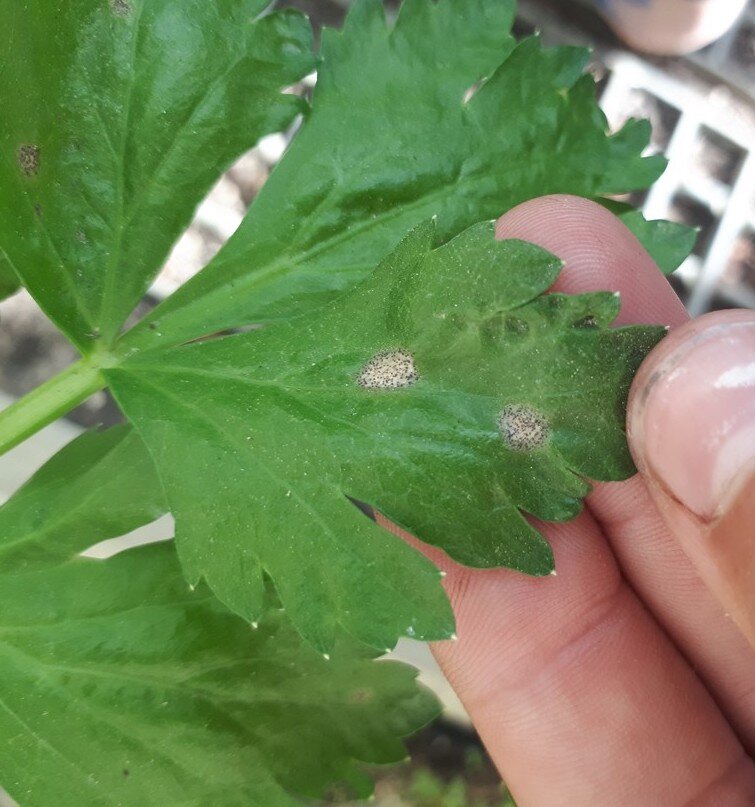Septoria leaf spot
Tomato, cannabis, blueberry, persley, and many more
Tan to brown leaf spots, small black fruiting bodies may be visible inside the spot.
Septoria leaf spot is caused by ascomycete pycnidia-producing fungi. These fungi can be seed-borne and are also transmitted using other infected plant material. It can also be spread by workers moving through wet foliage.
Avoid overhead irrigation and allow good air circulation. Both these measures can minimize the duration of leaf wetness which is a favorable condition for septoria leaf spot development.
Tebuconazole, azoxystrobin, boscalid + pyraclostrobin and mancozeb.
Copper-based fungicides
Bacillus subtilis
*Names marked in red are considered to be highly poisonous to beneficial insects.
*Names marked in green are considered to be organic and IPM (integrated pest management) compatible.
Image Gallery


